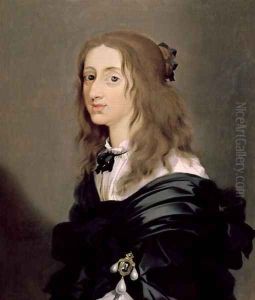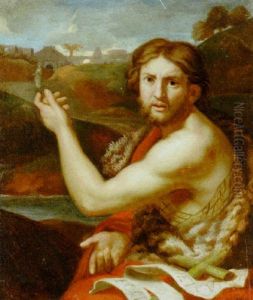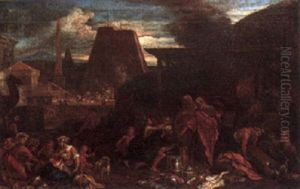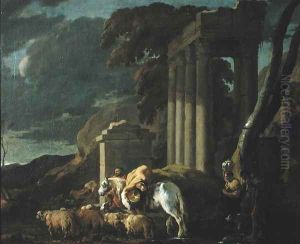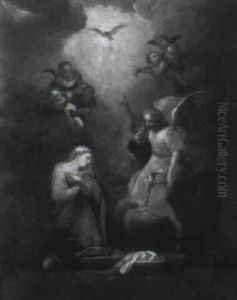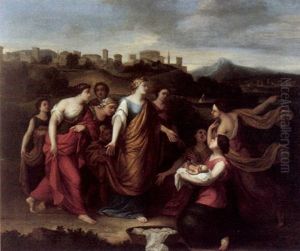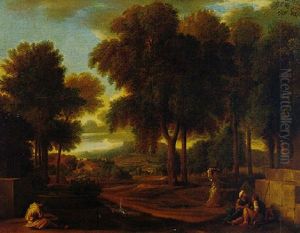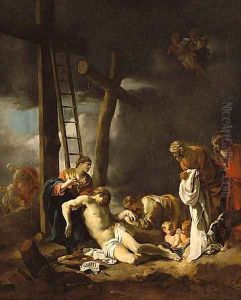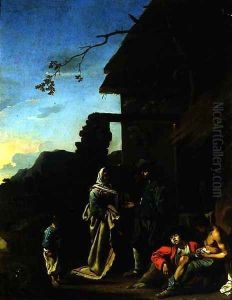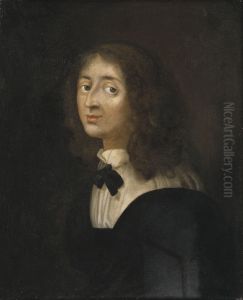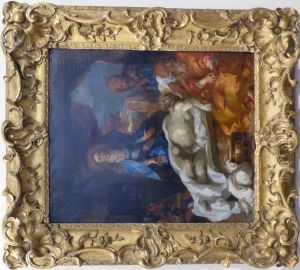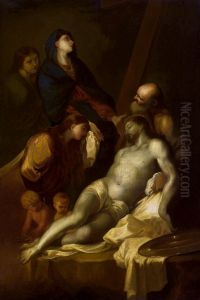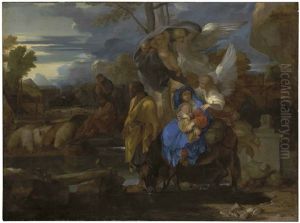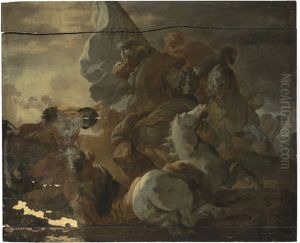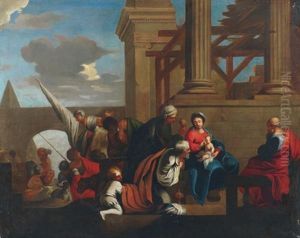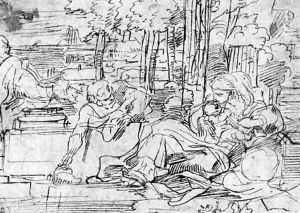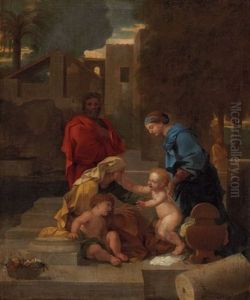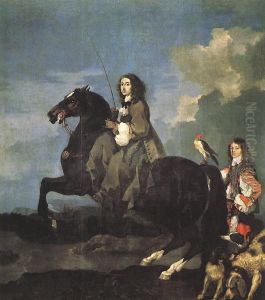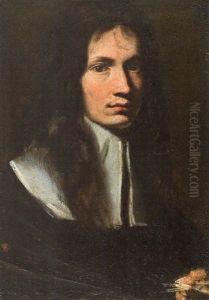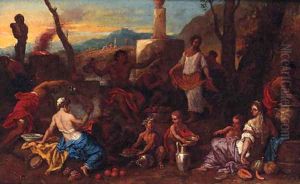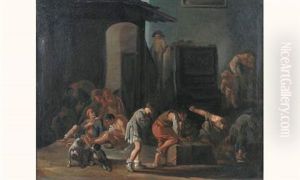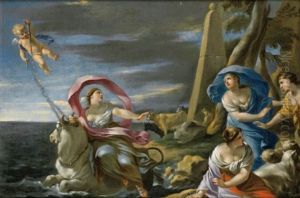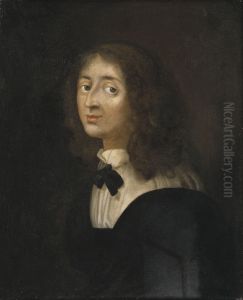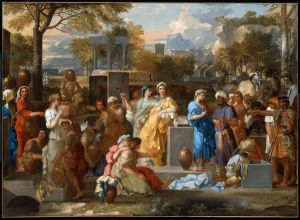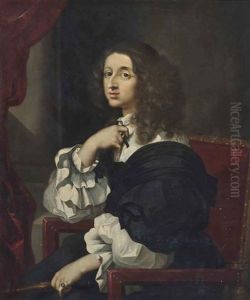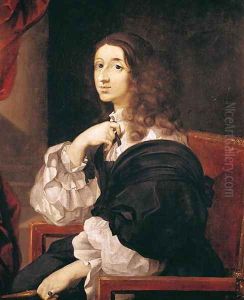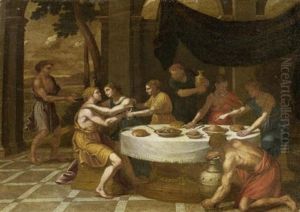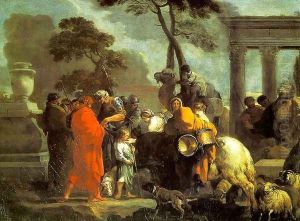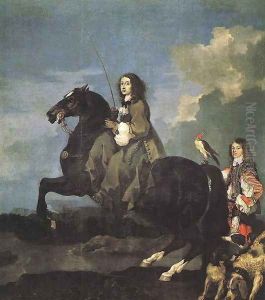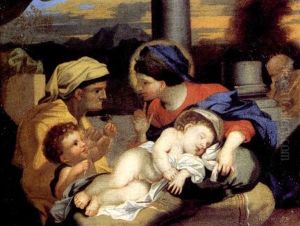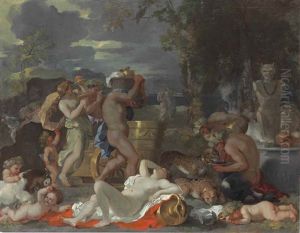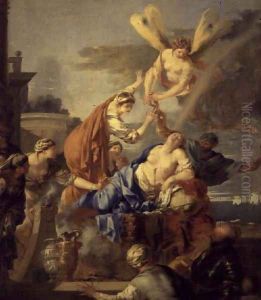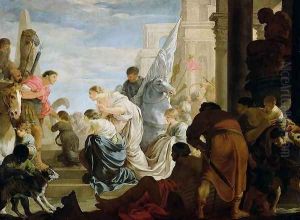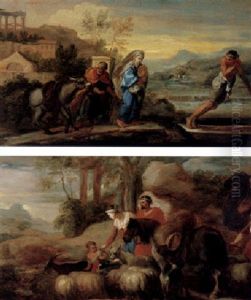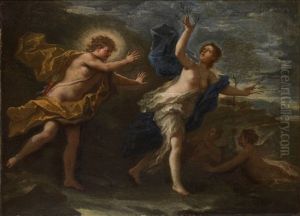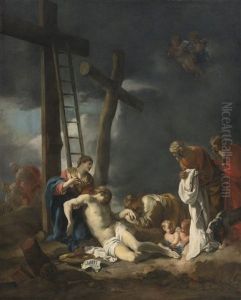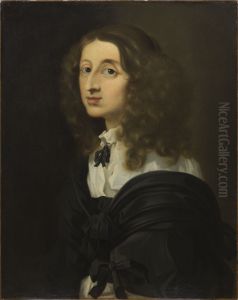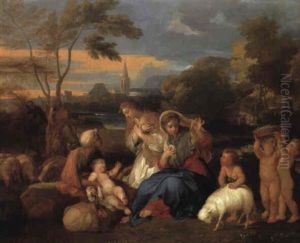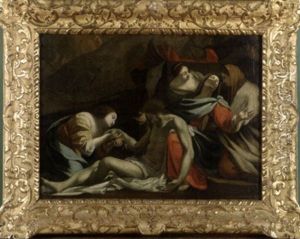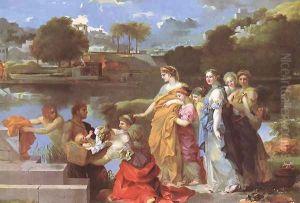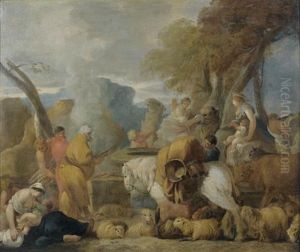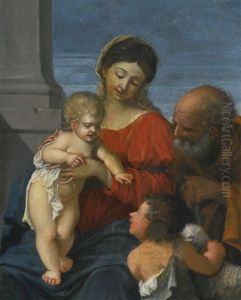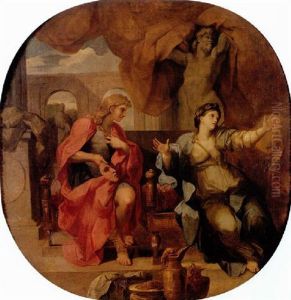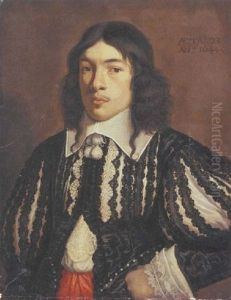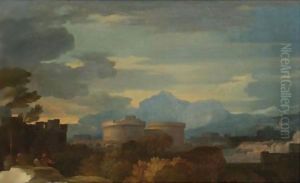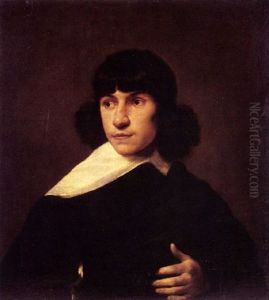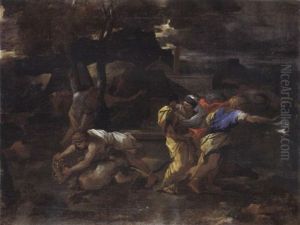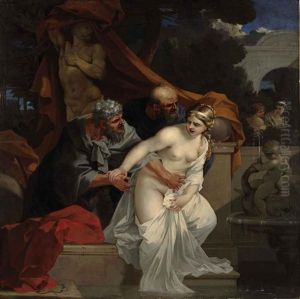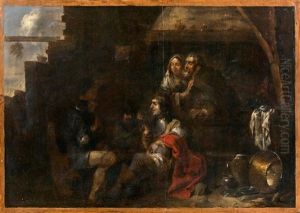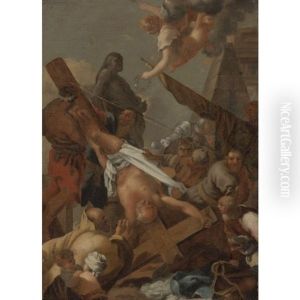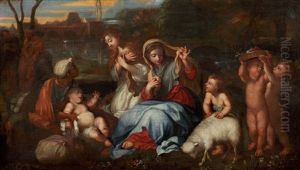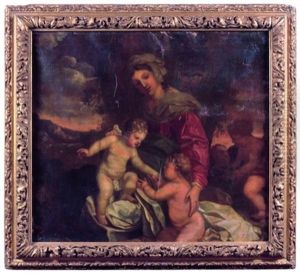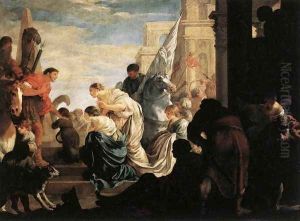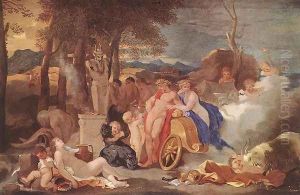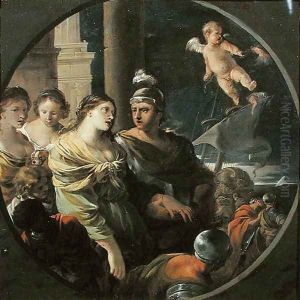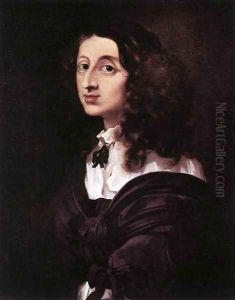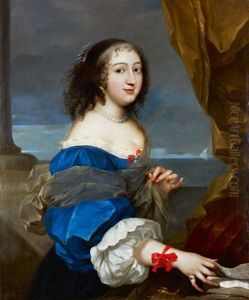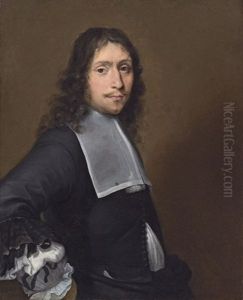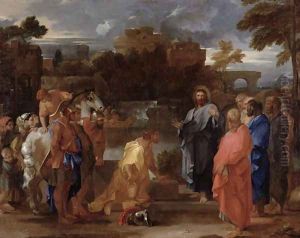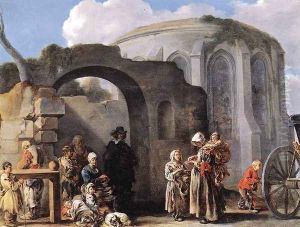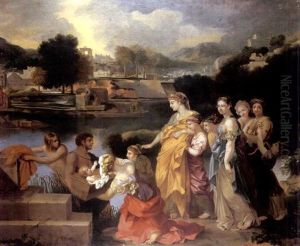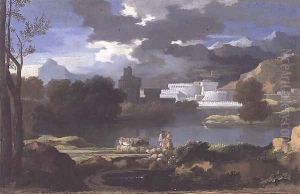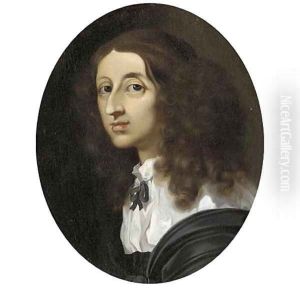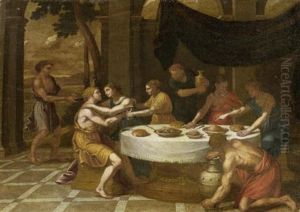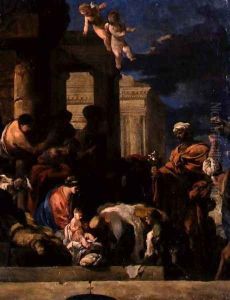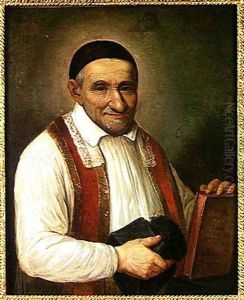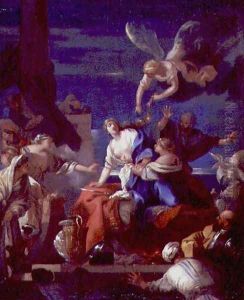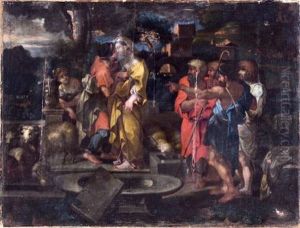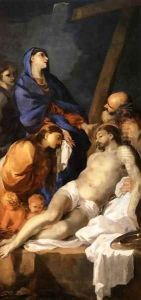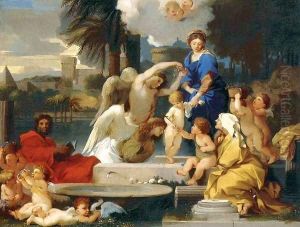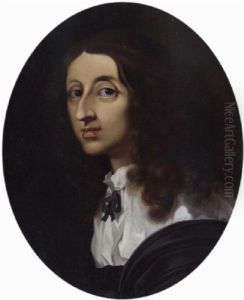Sebastien Bourdon Paintings
Sébastien Bourdon was a French painter and engraver, born in Montpellier on February 2, 1616, into a Protestant family. His artistic talent became evident early on, and despite the financial struggles of his family, he managed to receive some basic training in art. Bourdon's early career was marked by extensive travel throughout France and Italy, which greatly influenced his style and subject matter.
In Italy, Bourdon was heavily influenced by the works of the Baroque masters. He spent time in Rome, where he studied the works of Caravaggio and the Bamboccianti, a group of Dutch genre painters active in Rome. Bourdon's own work began to reflect the Baroque style, characterized by dramatic intensity and strong contrasts of light and shadow. He was also influenced by the classical landscapes of Claude Lorrain, which would become evident in his landscape paintings.
Bourdon returned to France in the 1630s and worked in Paris and his native Montpellier. His return to France saw him painting a mix of religious subjects, landscapes, and genre scenes. He was particularly noted for his eclectic style, as he did not adhere strictly to the prevailing Baroque aesthetic but also incorporated elements of Classicism and naturalism.
In 1652, Bourdon was appointed as a court painter to Queen Christina of Sweden, a testament to his growing reputation. However, his time at the Swedish court was short-lived, and he returned to France where he became one of the founding members of the Royal Academy of Painting and Sculpture in Paris. As a member of the Academy, he was involved in the intellectual and artistic debates of the time and contributed to the development of French art.
Towards the end of his career, Bourdon's work demonstrated a more serene and classical approach, moving away from the Baroque style that had characterized his earlier work. He also became known for his portraits, which exhibited a keen understanding of character and an ability to capture the essence of his sitters.
Sébastien Bourdon died on May 8, 1671, in Paris. Despite not being as famous as some of his contemporaries, Bourdon left behind a diverse and rich body of work that shows his versatility and adaptability as an artist. Today, his works can be found in various museums and collections around the world, appreciated for their historical value and artistic merit.
